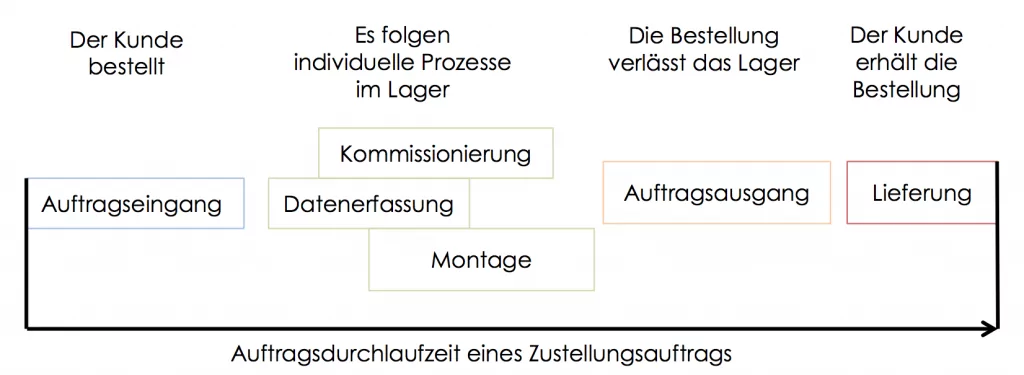When an order is received in a logistics centre, it passes through various processes until it is completed. For each of these individual processes, the lead time is measured. If you add the lead times of the individual processes, you get the total lead time, also called order throughput time.
An order can be of different nature; if it is a delivery order, the order processing time is equal to the delivery time that passes within the order placement by the customer and the subsequent receipt of the goods. The more service areas that are passed through here – including, for example, data preparation, removal units and the associated information such as packing lists, picking, packing or any assembly work that may be required – the longer the throughput time.
If the order is a transport order which is, for example, taken over by a forwarding agent, the order processing time is calculated from the collection to the delivery time.
The calculation of the order throughput time is, therefore, dependent on the respective system and its individual throughput times.
For more information on throughput time, see Material throughput time.
Graphic: © tup.com
Teaser picture: © dashadima – Fotolia.com
Also available in Deutsch (German)
